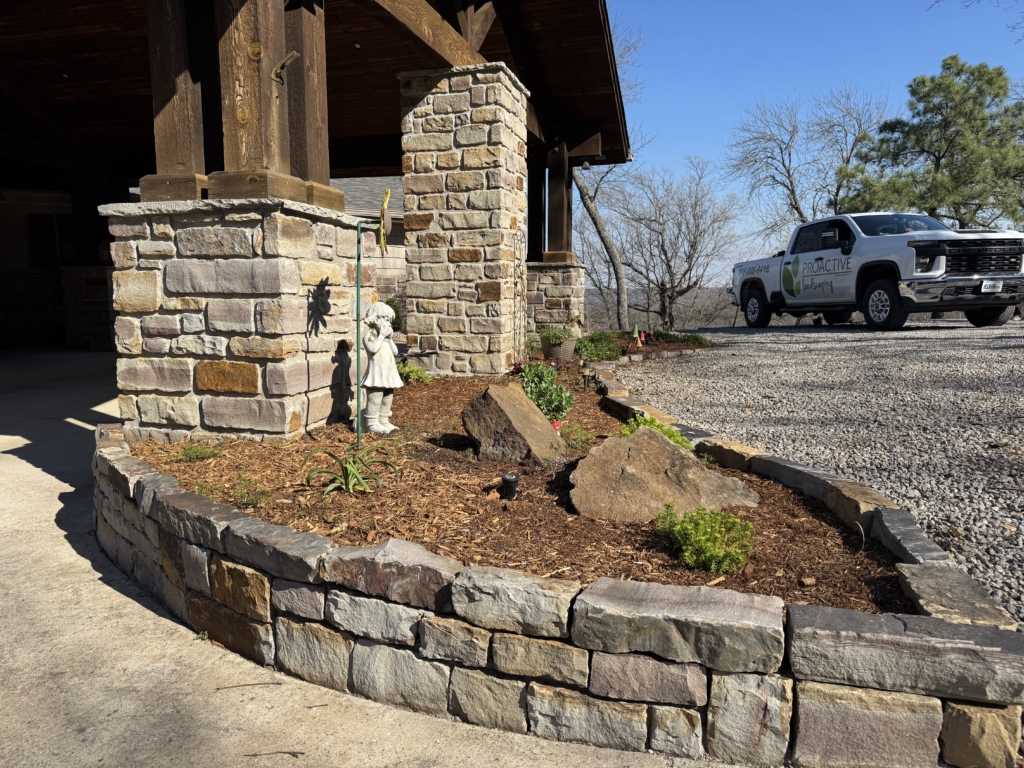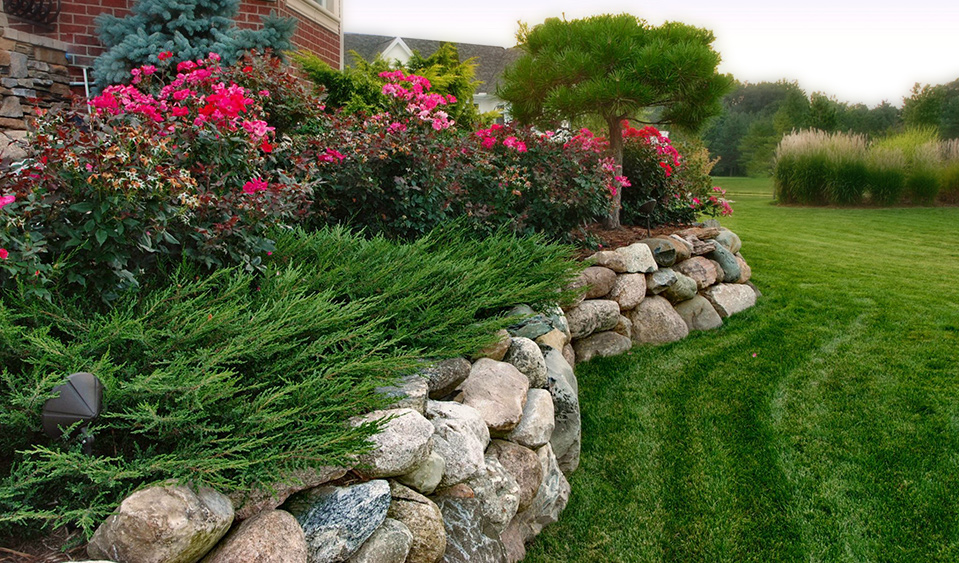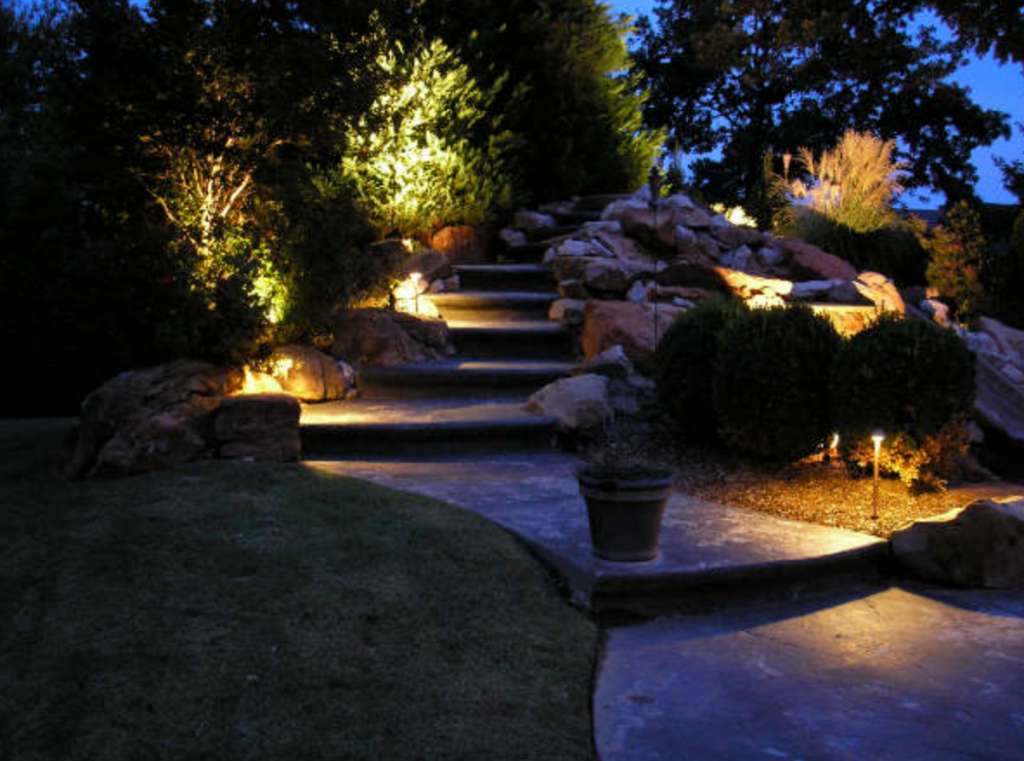
Your home’s architecture says a lot about you—your style, values, and attention to detail. But what happens when you step outside? Too often, there’s a disconnect between the house’s beauty and the landscaping surrounding it.
The best outdoor spaces are a true extension of the home. Elegant stone walls and walkways, built with complementary materials, strengthen and extend the design by working together to achieve a unified look that is visually anchored to the site.
#1. Landscape Architecture Never Stands Alone
Landscaping that fails to connect with the home’s style and character is a missed opportunity. It usually falls somewhere on a spectrum between trying too hard to stand out and failing to make a complementary contribution.
Skilled landscape architects and designers study homes. They look for repeating shapes and elements, extending lines and spaces, and softening edges or intersections. Involving the landscape designer early in the homebuilder or renovation process often leads to collaborative solutions that minimize unnecessary rework.
Proactive planning ensures that all contractors are mobilized and ready, minimizing potentially costly delays. The outdoor professionals will be ready to engage and complete their work more efficiently.
#2. Landscape Materials Connect And Unify Spaces
Hardscape and plant materials are much more than structural or decorative elements. For example, the pyramidal canopies of tree groupings can mirror similar shapes in the home’s roofline for dramatic effect.
Walkways and patios are functional features, but also a design opportunity. A well-designed path invites visitors in while reinforcing your home’s architectural story.
There was a time when a brick sidewalk leading up to the home’s central entrance was a charming feature. Nowadays, properties are larger, and those walkways must now suit the tendencies of visitors who arrive by car more than by walking from the street.
#3. Garden Walls Emphasize Relationships With The Land

Thoughtfully placed garden beds can highlight entryways, soften architectural lines, or mirror lines within the home’s exterior design, such as repeating window patterns or decorative brickwork.
It’s important to choose the brick or stone used for complementary hardscapes. While matching the materials exactly may seem like a safe choice, this approach can come off as trying too hard.
Contrasts done well can be striking. A traditional brick home might pair beautifully with sleek limestone paving. Thus, accent hardscape materials that complement, rather than match, the home’s exterior will usually work best.
Since hardscapes often require a substantial investment, it’s recommended that a mock-up of the materials being considered be physically created on site.
#4. Marrying Modern Features with Traditional Homes
While a home’s architecture may be rooted in tradition, outdoor spaces don’t have to feel stuck in time. Many homeowners enjoy blending classic architecture with updated landscape features like modern pavers, contemporary lighting, or minimalist plantings. These elements can provide just enough visual tension to keep things interesting.
Think of a patio as an outdoor living room with room to breathe—architecturally tied to the house but with its own identity. Framing the space with canopy trees such as oaks or maples helps define the vertical plane, providing shade, intimacy, and a smoother transition from indoor to outdoor living. The contrast of old and new, soft and hard, can make your outdoor areas feel timeless rather than trendy.
#5. Lighting Integrates Outdoor Spaces

Even the most beautifully designed landscape can disappear after dark. Lighting brings the landscape to life in the evening hours and makes it easier for friends and family to navigate outdoor spaces safely. But beyond utility, lighting also critically emphasizes the structure, symmetry, and textures of your home and garden features.
Well-designed lighting schemes highlight key architectural features—uplighting stone columns, washing the face of a garden wall, or softly illuminating tree canopies and entry paths. When the fixtures are chosen to match exterior finishes like window trim or front door hardware, they blend into the overall design. Lighting becomes the final integration layer, allowing the home and landscape to glow together.
Proactive Landscaping: Helping Oklahoma Homeowners Enjoy Outdoor Living
Our top priority is creating living spaces that are right for you. We pride ourselves on working with you from concept to construction to make the right landscape for your needs. Contact us today for a free consultation to explore your next landscaping project.

